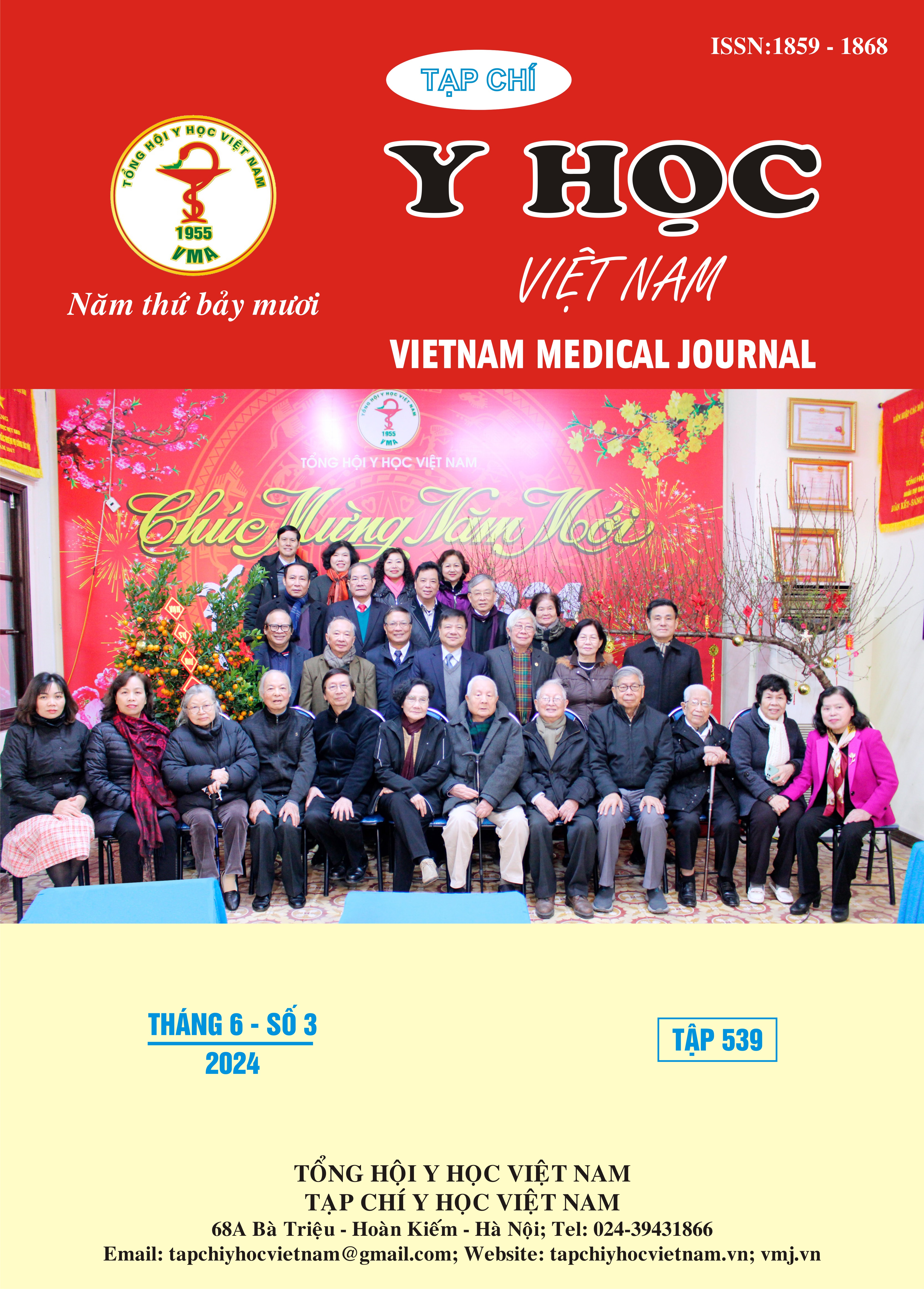FACTORS ASSOCIATED WITH THE SEVERITY OF COVID-19 IN CHILDREN WITH UNDERLYING NEUROLOGICAL CONDITIONS
Main Article Content
Abstract
Objectives: To investigate factors related to the severity of COVID-19 in children with underlying neurological conditions. Methods: A cross-sectional study was carried 97 children with COVID-19 and underlying neurological conditions admitted to the COVID-19 department at Hospital Children 1 from July 1st 2021 to July 1st 2022. Results: There were 76 children (78,4%) with mild to moderate COVID-19, while 21 children (21,6%) experienced severe to critical illness. The mortality rate was 5,2%. Among the severe to critical COVID-19 cases, 71,4% had cerebral palsy, 95,2% presented with fever, 76,2% exhibited cough and 100% experienced respiratory distress. The median ferritin level was 345 (227,7 – 654,7) μg/L, median activated partial thromboplastin time was 34,1 (31,1 – 43,1) s, and median fibrinogen was 3 (2,5 – 3,6) g/L. Additionally, 76,2% showed consolidation on chest X-ray, and 76,2% had interstitial lung pattern. Corticosteroids were used by 95,2% of patients for a median duration of 9 (7 – 10) days, while 95,2% received anticoagulants for a median duration of 10 (8 – 12) days. All patients received antibiotics, and 57,1% were administered remdesivir. The median length of hospital stay for COVID-19 department admission was 12 (8 – 22) days, and for overall hospitalization, it was 15 (11 – 45) days. The mortality rate of the severe to critical COVID-19 group was 23,8%. All these results were significantly higher compared to the mild to moderate COVID-19 group, with statistical significance (p < 0,05). Conclusions: The severity of COVID-19 in children with underlying neurological conditions is associated with several factors: cerebral palsy, fever, cough, respiratory distress, CRP > 20 mg/L, elevated levels of ferritin, aPTT, and fibrinogen, as well as consolidation or interstitial lung pattern on chest X-ray. The utilization rates of corticosteroids, anticoagulants, antibiotics, remdesivir, length of hospital stay, and mortality rates are all higher in the severe-critical group compared to the mild-moderate group.
Article Details
Keywords
COVID-19, underlying neurological conditions, severity, children
References
2. Nguyen PNT, Thuc TT, Hung NT. Risk factors for disease severity and mortality of children with COVID-19: A study at a Vietnamese Children’s hospital. J Infect Chemother. 2022;28(10):1380-1386. doi:10.1016/j.jiac.2022.06.010.
3. Brandenburg JE, Fogarty MJ, Sieck GC. Why individuals with cerebral palsy are at higher risk for respiratory complications from COVID-19. J Pediatr Rehabil Med. 2020;13(3):317-327. doi:10. 3233/PRM-200746.
4. Drouin O, Hepburn CM, Farrar DS, et al. Characteristics of children admitted to hospital with acute SARS-CoV-2 infection in Canada in 2020. CMAJ. 2021;193(38):1483-1493. doi:10. 1503/cmaj.210053.
5. Harwood R, Yan H, Talawila N, et al. Which children and young people are at higher risk of severe disease and death after hospitalisation with SARS-CoV-2 infection in children and young people: A systematic review and individual patient meta-analysis. EClinicalMedicine. 2022;44(2):261-287. doi:10.1016/j.eclinm.2022.101287.
6. Kompaniyets L, Agathis NT, Nelson JM, et al. Underlying Medical Conditions Associated With Severe COVID-19 Illness Among Children. JAMA Netw Open. 2021;4(6): 211-282. doi:10.1001/ jamanetworkopen.2021.11182.
7. Saleh M, Alkofide A, Alshammari A, et al. Changes in Hematological, Clinical and Laboratory Parameters for Children with COVID-19: Single-Center Experience. J Blood Med. 2021; 12(10):819-826. doi:10.2147/JBM.S321372.
8. Sedighi I, Fahimzad A, Pak N, et al. A multicenter retrospective study of clinical features, laboratory characteristics, and outcomes of 166 hospitalized children with coronavirus disease 2019 (COVID‐19): A preliminary report from Iranian Network for Research in Viral Diseases (INRVD). Pediatr Pulmonol. 2022;57(2):498-507. doi:10.1002/ppul.25756.


